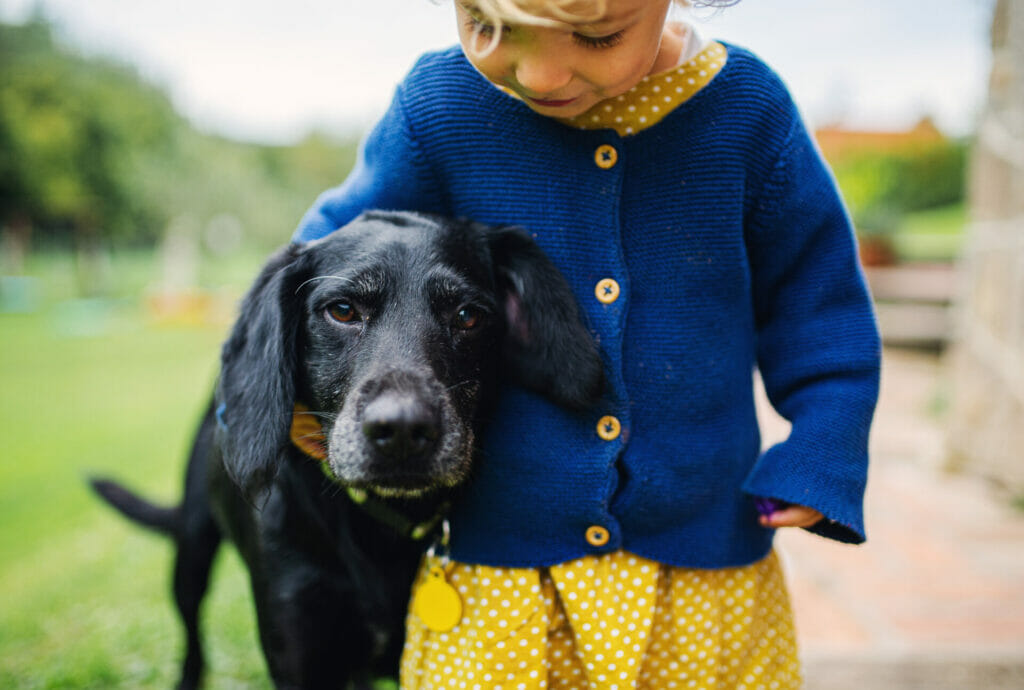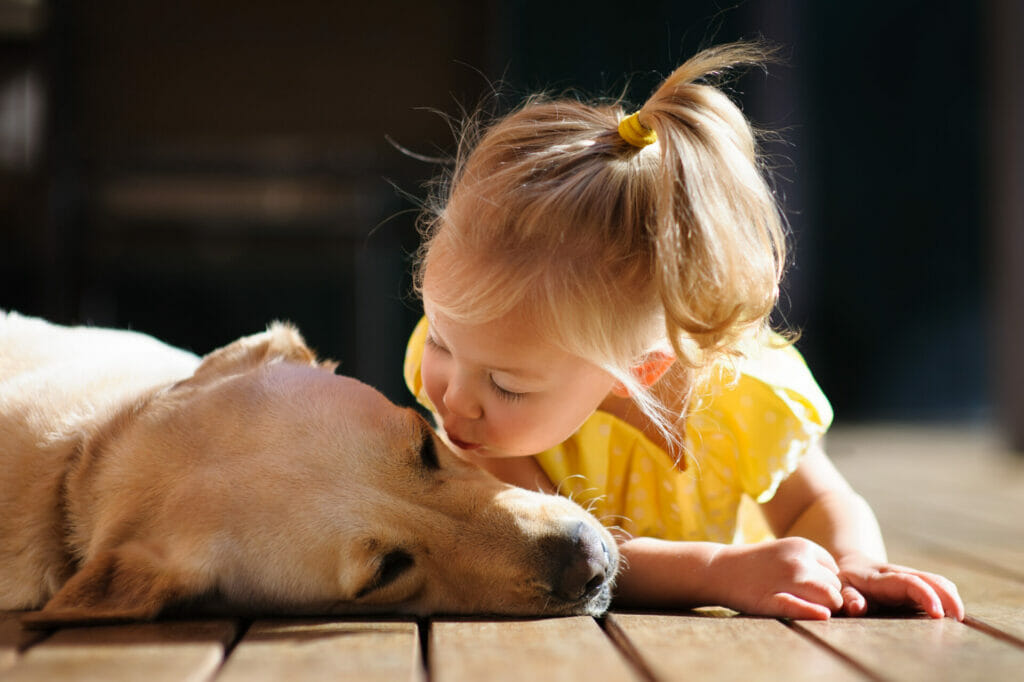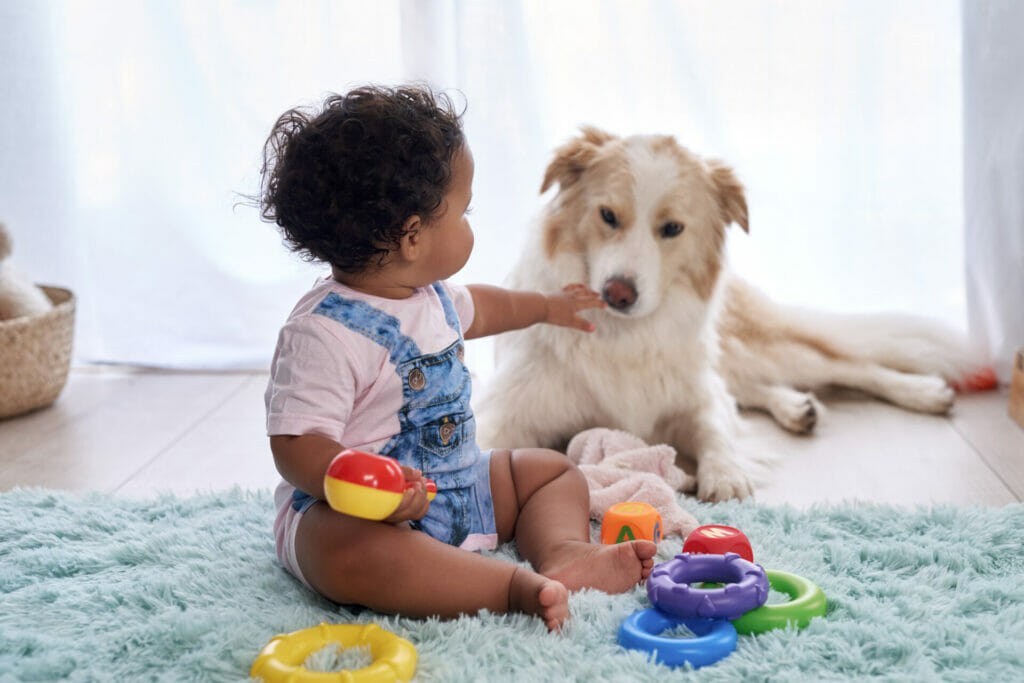The young toddler phase is often the toughest when it comes to baby-dog relationships. Young toddlers do not move the way adults do, and dogs have no concept of developmental milestones. Most dogs find it quite shocking when a baby starts to crawl! Even if previously relaxed around a young infant, many dogs will have a hard time with a mobile, unsteady, falling, stumbling, all-while-making-lots-of-noise toddler.
1. Difficulties associated with a mobile baby.
A dog that is often pursued and cornered by a moving baby will become uncomfortable and may GROWL or WORSE. Improperly managed interactions can prevent your dog from building a positive association with your child!
2. Separate, model, and teach.
- Physically separate your child and your dog when you are not 100% present.
- Children learn through observation. Model the behavior you want your child to imitate.
- Teach your toddler to share space with your dog without interacting. If your child moves toward the dog in an attempt to interact, redirect them into another activity. Redirect them before they’ve even gotten close to the dog. You can also cue your dog away if your baby starts moving in their direction.

3. When interactions are NOT safe.
- A dog should be comfortable approaching a child without the contingency of food being presented. If the dog wouldn’t approach the child otherwise, drawing a dog who is uncomfortable closer might be dangerous.
- If a dog is jumpy and grabby with food or protects food (resource guarding), do not involve a child in food-related activities.
- High-intensity activities like tug of war. Many dogs get excited when playing tug and can easily pull kids over or mouth their hands.
4. Does your child “speak doggie”?
Take as many opportunities as you can to repeat and point out the body language a dog displays. Toddlers cannot recognize when a dog might be scared or uncomfortable. It takes many repetitions and time for a child to understand. Teaching your toddler to “speak doggie” will help you keep everyone SAFE. Use simple words and point out signals the child can easily observe.
Examples:
- “Do you see Lola is happy we are home? Her body is super wiggly, and her tail is wagging fast. She is bouncing with joy!”
- “Lola needs space right now. Can you see her turning and backing away? Her tail is down, and her ears are going back.”
Common stress signals that your child can easily observe:
- Yawning (when not very tired)
- Lip or nose lick (when no food nearby)
- Ears flat back
- Panting (when not hot, thirsty, or just exercised)
- Moving body away, backing up
- Tail tucked
- Shake off (stress release)
Common happy/relaxed signals that your child can easily observe:
- Rapidly wagging tail
- Wiggly body
- Greeting stretches
- Bouncy like a ball

5. Does your toddler know how to pet a dog?
When you allow petting, it should happen only under these conditions:
- Choose a time when your child is calm and connected with you.
- You pet the dog together with your child.
- Your dog actively solicits and approaches for attention and petting without the use of treats or food.
- The petting is brief, a few seconds of petting at a time, with the whole session being a maximum of a few minutes.
- I recommend introducing a one-hand rule for petting. Your child pets your dog only with one hand. If your child has a hard time not grabbing the fur, petting with one finger or the back of the hand is helpful.
Whether or not you have children of your own, your dog will likely meet a little one at some point. Chances are, everything will go just fine. But what if it doesn’t?
The Dog Meets Baby Toddler Course helps you prepare your dog for the mobile baby phase, effectively address common toddler behaviors towards dogs, and teaches you to understand dog behavior so the little ones in your life stay safe.




















